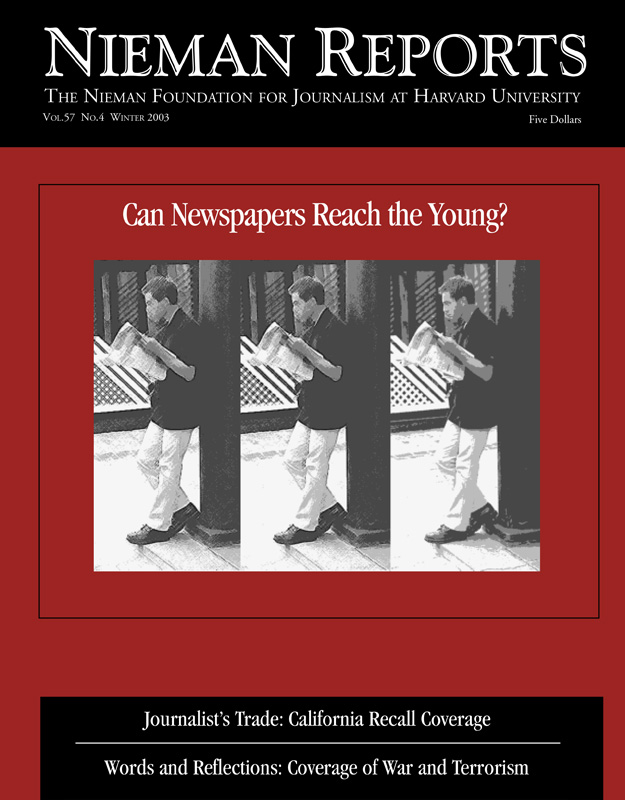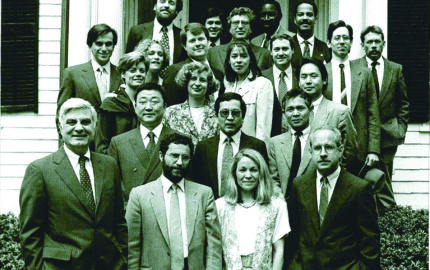John Kenneth Galbraith, the Paul M. Warburg Professor of Economics Emeritus at Harvard University and a friend to generations of Nieman Fellows, once observed that “There is nothing about this program that can be considered finished. Nothing that can be considered normal. To the Niemans, there is no stationary state.” Galbraith brings a long perspective to this matter. He was a young economics instructor when the program began in 1938 and, through the years, has had more discussions with Nieman classes than anyone at the university.
This spirit of “no stationary state” is reflected in the recent addition to Walter Lippmann House, which was completed this fall and has quickly become the center of activities for the current class of Nieman Fellows.
The idea for expansion grew from the reality that Lippmann House simply didn’t have enough room to accommodate a growing staff and the expanding activities of the Nieman program. As our thinking evolved, Charles Sullivan, executive director of the Cambridge Historical Commission, cautioned, “Don’t attempt to replicate an 1836 house.” The architects listened and proposed a garden room design, which has emerged as a graceful complement to the original Greek Revival building that became the home of the Nieman Foundation in 1978.
The new wing has created an improved learning environment for the Nieman Fellows. The seminar room, with high ceilings, wood paneling, comfortable seating and a multifunctional audio-visual center, is already demonstrating its versatility as a place for seminars, dinners, film and video showings, small conferences, and social gatherings. On the lower level, the Bill Kovach Library is now a quiet place for reading and talking that brings together in one place the books that have been scattered on shelves throughout Lippmann House. It also provides a place to display special collections, such as bound volumes of the newspaper PM and books that came as gifts from Nieman Fellows. Next to the library is the computer learning center, where fellows can check e-mail, work on the Internet, and participate in training programs such as the computer-assisted reporting class that is offered every January.
A new structure of this kind has to be paid for, of course, and the foundation has made a strong start toward this goal. The John S. and James L. Knight Foundation of Miami provided the lead gift for the Lippmann House project. To honor this generous gift, as well as recognize the Knight Foundation’s long support of both the Nieman Foundation and Harvard University, the wing will be known as the Knight Center. Hodding Carter III, president and CEO of the Knight Foundation, said: “Nothing could please us more than to be associated so closely with the Nieman program. Its objectives are ours and help further exactly the kind of journalism that the Knight brothers supported in their newspapers for so long.” Carter was a Nieman Fellow in 1966 and his father, Hodding Carter, Jr., was in the second class of fellows in 1940.
The Knight Foundation’s gift is particularly meaningful for its exemplary vision and support of education for journalists and the innovative programs that fulfill this mission.
John S. Knight was the editor of the Akron Beacon Journal and a powerful influence in my early days on the paper as a reporter and later as executive editor. J.S.K. was a plainspoken Ohio editor who became a national figure as chairman of Knight Newspapers. He was much admired for his virtue as an editorialist who spoke his mind with clarity and honesty and as a newspaper executive who put journalism ahead of the bottom line. The Nieman Foundation will formally dedicate the Knight Center on May 24, 2004. At that time, we expect to recognize other major contributors for whom rooms in Knight Center might be named.
Fundraising is a skill that does not come easily or naturally to journalists. Each of my predecessors has struggled with this reality as he tried to meet the obligation of adding to the Nieman endowment from time to time in the interest of enlarging the program and providing a richer experience for the fellows. The task before us now is to pay down a mortgage of four million dollars. At a university where the endowment exceeds $19 billion and fundraising is an art, this amount might seem small. But for a journalist, raising that amount is a daunting goal.
The Nieman legacy and the opportunity it offers 24 journalists each year is now strengthened by the splendid new setting in the Knight Center at Walter Lippmann House. For many who remember the Nieman experience as a gift beyond measure, a donation is an opportunity to help extend this legacy for new generations of midcareer journalists who have demonstrated accomplishment, a deep commitment to excellence, and leadership potential.



